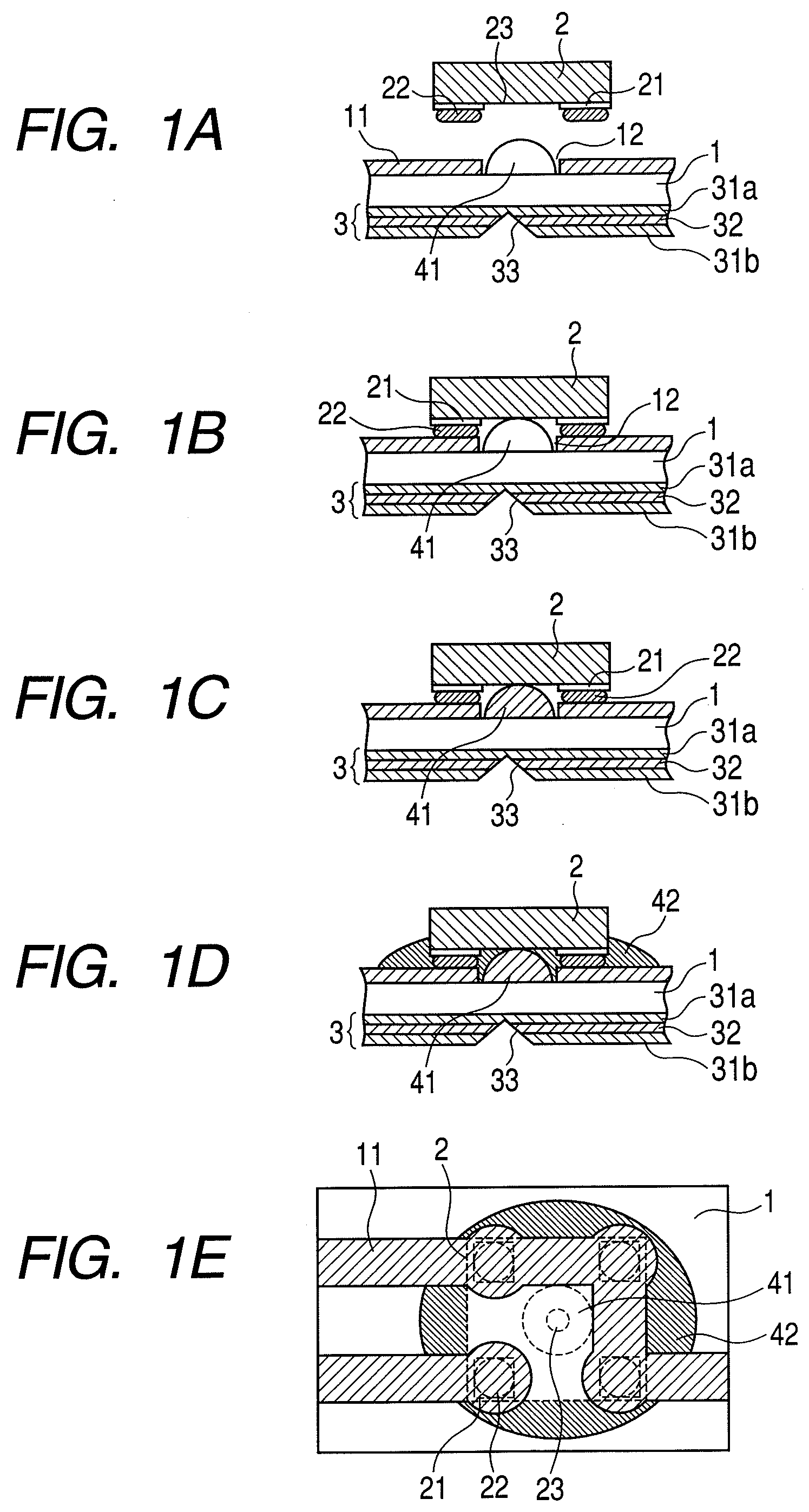Junction Structure Between Optical Element and Substrate, Optical Transmission/Receiving Module, and Method of Manufacturing the Optical Module
a technology of optical elements and junction structures, applied in the field of junction structures between optical elements and substrates, optical transmission/receiving modules, and methods of manufacturing optical modules, can solve the problems of increasing light loss, difficult for the under-fill resin to enter the light path, and disadvantageous increase of light loss, so as to improve the efficiency of optical coupling and improve the reliability of physical properties of the junction structure. , the effect of satisfying the junction structur
- Summary
- Abstract
- Description
- Claims
- Application Information
AI Technical Summary
Benefits of technology
Problems solved by technology
Method used
Image
Examples
first embodiment
[0029]A junction structure between an optical element and a substrate having a light transmission line, a method of manufacturing an optical module, and an optical wiring device using the junction structure between an optical element and a substrate according to a first embodiment of the present invention are described below with reference to FIGS. 1A to 1E and FIG. 3. FIGS. 1A to 1E are views illustrating a junction structure between an optical element and a substrate using an Au bump and a method of manufacturing an optical module according to the first embodiment. FIG. 2 and FIGS. 3A and 3B are views each illustrating a cross section of a light-transmitting / receiving module which is an optical wiring device using the junction structure between an optical element and a substrate according to the first embodiment. FIG. 1A to FIG. 1D are views each illustrating a cross section of the junction structure between an optical element and a substrate according to the first embodiment. FIG...
second embodiment
[0045]A junction structure between an optical element and a substrate having a light transmission path and a method of manufacturing the light module according to a second embodiment of the present invention will be described below with reference to FIGS. 4A to 4E. FIGS. 4A to 4D are views each illustrating a cross section of the junction structure for an optical element according to the second embodiment, and FIG. 4E is a transparent plan view illustrating the junction structure for an optical element according to the second embodiment. Also in descriptions of the second embodiment, it is assumed that Kapton is used as a polyimide film constituting the substrate 1 and a VCSEL is used as the optical element 2.
[0046]The first embodiment shown in FIGS. 1A to 1E is different from the second embodiment in that an opening 13 is provided in the polyimide film (for instance, Kapton) constituting the substrate 1, as shown in FIGS. 4A to 4E. The under-fill resin 41 not containing a filler is...
PUM
| Property | Measurement | Unit |
|---|---|---|
| thickness | aaaaa | aaaaa |
| refractive index | aaaaa | aaaaa |
| melting point | aaaaa | aaaaa |
Abstract
Description
Claims
Application Information
 Login to View More
Login to View More - R&D
- Intellectual Property
- Life Sciences
- Materials
- Tech Scout
- Unparalleled Data Quality
- Higher Quality Content
- 60% Fewer Hallucinations
Browse by: Latest US Patents, China's latest patents, Technical Efficacy Thesaurus, Application Domain, Technology Topic, Popular Technical Reports.
© 2025 PatSnap. All rights reserved.Legal|Privacy policy|Modern Slavery Act Transparency Statement|Sitemap|About US| Contact US: help@patsnap.com



